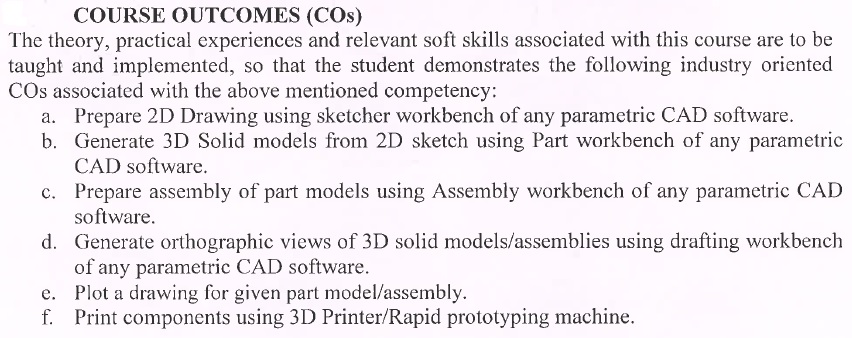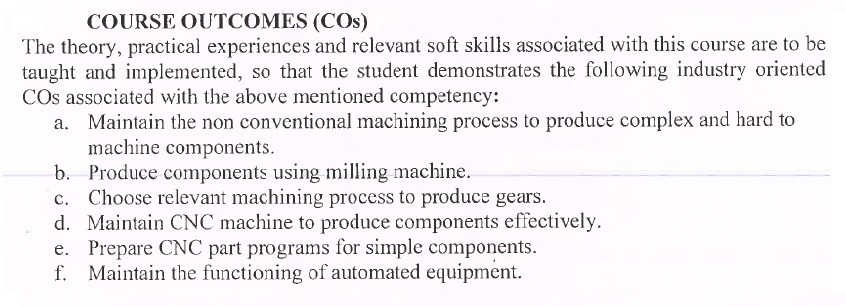bsiet.gnomio.com
-
Welcome to your Moodle site
Now, you are in control!
Here are some links of interest:
Available courses
a. Use number system and codes for interpreting working of digital system.
b. Use Boolean expressions to realize logic circuits.
c. Build simple combinational circuits.
d. Build simple sequential circuits.
Course Outcomes(COs)
a. Analyze the fuctional block of 8086 microprocessor.
b. Write Assembly language program for given Problem.
c. Use instructions for different addressing modes.
d. Develop an Assembly language program using assembler.
e.Develop assembly language program using Procedure,MACRO and modular programming approach.
a. Analyze the fuctional block of 8086 microprocessor.
b. Write Assembly language program for given Problem.
c. Use instructions for different addressing modes.
d. Develop an Assembly language program using assembler.
e.Develop assembly language program using Procedure,MACRO and modular programming approach.
Course Outcomes
A)Implement Network Layer Protocol
B)Configure IPV6 Network
C)Choose routing protocol in given network situation
D)Implement Different transport layer protocols
E)Configure various application layer protocols.
COURSE OUTCOMES (COs)
The theory, practical experiences and relevant soft skills associated with this course are to be taught and implemented, so that the student demonstrates the following industry orient COs associated with the above mentioned competency.
a. Undertake surveys to decide the status of socio-economic significance.
b. Identify the need of watershed management in rural areas.
c. Suggest relevant government schemes for construction of roads, housing and energy conversation.
d. Suggest the relevant cottage and agro based industries for rural areas.
e. Select the relevant schemes of central/state Government for the rural areas.
f. Apply the principles of rural development in the areas.
COURSE OUTCOMES (COs)
1.Identify
the types of road as per IRC recommendations
2.Implement
the geometrical design features of different highways.
3.Perform
different tests on road materials.
4.Evaluate
traffic flow characteristics.
5.Implement
hill road construction using relevant materials, techniques and methods.
6.Undertake
maintenance of roads and drainage.
COURSE OUTCOMES FOR BUILDING CONSTRUCTION SUBJECT (COs)
1.Identify
the components of building structures.
2.Propose
suitable type of foundation for
building structures.
3.Select
suitable type of masonry for
building structures.
4.Propose
relevant means of communications
for different types of buildings.
5.Select
relevant material for finishing
works.
6.Execute
safe practices in building
construction activities.
COURSE OUTCOMES (COs)
The theory,practical experiences and relevant soft skills associates with this course are to be taught and implemented, so that the student demonstrates the following industry oriented COs associated with the mentioned competency :
a. Prepare plans using Plane Table Surveys.
b.Prepare plans using Theodolite Surveys.
c. Find distances and elevations using Tacheometer.
d. Set out simple circular curves.
e.Prepare plans using Total Station instrument.
f.Locate coordinates of stations using
Course Outcomes-
1.Articulate
practical applications of Moment of Inertia of symmetrical and asymmetrical
structural sections.
2.Interpret
structural behavior of materials under various loading conditions.
3.Select
material considering engineering properties for various structural
applications.
4.Interpret
shear force and bending moment diagrams for various types of beam and loading
conditions.
5.Determine the bending and shear stresses in beams under different loading conditions.
6.Check the column safety for various loading and end conditions.
a. Interpret the characteristics of Measuring Instrument.
b. Calibrate the different electronic instrument.
c. Use the relevant instrument to measure specified parameters.
d. Interpret the working of various sensors and transducers.
e. Use various types of sensors and transducers to measure the quantities.
f. Maintain Signal conditioning and Data Acquisition system.
a. Use relevant frequency range for different communication systems.
b. Use relevant modulation technique for the specified application.
c. Maintain transmitter and receiver circuits of AM and FM.
d. Use relevant media for transmission and reception of signals.
e. Use relevant type of antenna for various applications.
a. Use number system and codes for interpreting working of digital system.
b. Use Boolean expressions to realize logic circuits.
c. Build simple combinational circuits.
d. Build simple sequential circuits.
a. Troubleshoot mobile handsets.
b. Assess cellular systems capacity.
c. Assess performance of standards of different cellular mobile systems.
d. Select relevant wireless technology suitable for various applications.
e. Test the performance of various wireless protocols.
a. Use specified waveguides in microwave communication system.
b. Maintain passive microwave components and devices.
c. Maintain active microwave components and devices.
d. Interpret RADAR based systems for range detection.
e. Maintain various types of RADAR system for the specified application.
a. Select the relevant micro-controllers for various industrial applications.
b. Use ‘Embedded C’ programming language to maintain embedded systems.
c. Interpret the communication standards of embedded systems.
d. Develop basic applications using embedded systems.
e. Interpret features of Real Time Operating System.
2. TIME
DOMAIN ANALYSIS.
3. PROCESS
CONTROLLERS.
4. FUNDAMENTAL
OF PLC.
5. PLC HARDWARE AND PROGRAMMINGCOURSE OUTCOMES (COs)
CO1. Use
principles of general insurance in motor vehicle insurance.
CO2. Prepare
insurance proposal & policy forms for motor vehicle.
CO3. Use relevant contract insurance forms by planning
underwriting risk.
CO4. Asses
the different types of hazards for insurance renewal.
CO5. Asses
the different types of
insurance claims.
COURSE OUTCOMES
1.Compute
Moment of Inertia of symmetric and asymmetrical structural sections.
2.Estimate
simple stresses in machine components.
3.Perform
test to evaluate mechanical properties according to Indian standards.
4.Compute
S.F & B.M and corresponding shear & bending stresses in beams subjected
to point & UDL.
5.Estimate stresses in shafts under
twisting moments.6.Estimate
stresses in short members subjected to eccentric loading.
1.Compute
Moment of Inertia of symmetric and asymmetrical structural sections.
2.Estimate
simple stresses in machine components.
3.Perform
test to evaluate mechanical properties according to Indian standards.
4.Compute
S.F & B.M and corresponding shear & bending stresses in beams subjected
to point & UDL.
5.Estimate stresses in shafts under
twisting moments.6.Estimate stresses in short members subjected to eccentric loading.
Skip course categories



























